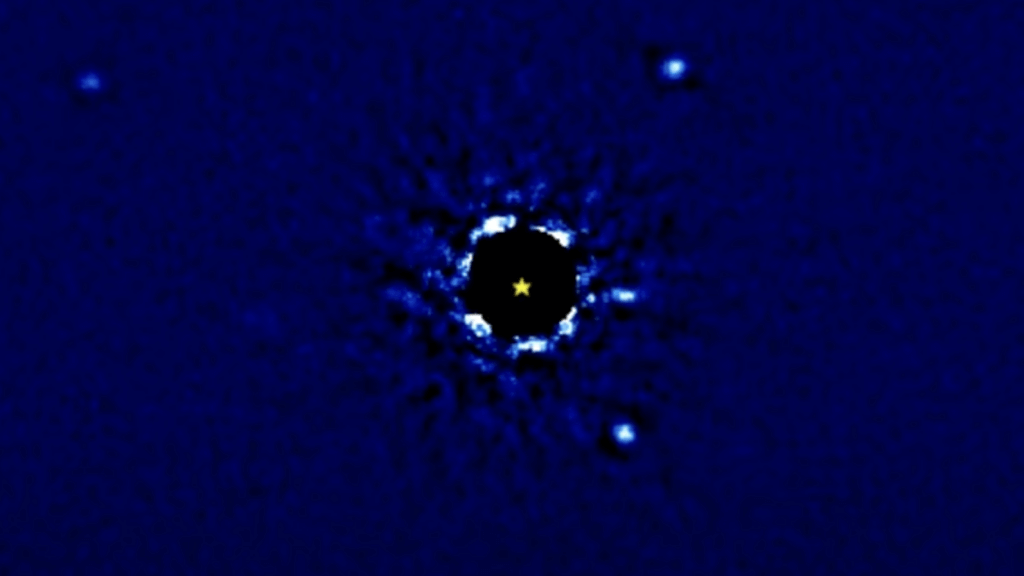
Watch these distant planets orbit their star in spectacular time-lapse (Image Credit: Mashable)
Some space events happen too slowly to capture as a movie, but a new time-lapse video provides a rare glimpse at another solar system’s planets revolving around their star.
Northwestern University astrophysicist Jason Wang squished 12 years of real telescope images into a 4.5-second video(Opens in a new window) of HR 8799, a star considered not too distant from Earth at just over 133 light-years away. Visible to the naked eye in the Pegasus constellation, the star hosts at least four jumbo planets.
Many exoplanets — as in planets that don’t orbit our sun — are discovered by watching them transit in front of their distant stars to prove they exist. NASA has so far identified over 5,200 exoplanets(Opens in a new window), though experts estimate there could be over a trillion lurking in the Milky Way galaxy alone.
But this solar system is special because scientists can see these giant planets orbiting the star and have taken rare, direct images(Opens in a new window). Telescope observatories in Hawaii have snapped pictures of the planets for years.
Wang, an expert in exoplanet imaging, says there’s no scientific value to his video of the system. But it does help astronomers convey the perplexing subject of planetary orbits to the public.
“It’s usually difficult to see planets in orbit,” Wang said in a statement(Opens in a new window). “For example, it isn’t apparent that Jupiter or Mars orbit our sun because we live in the same system and don’t have a top-down view.”

Credit: Gemini Observatory / Lynette Cook illustration
“It isn’t apparent that Jupiter or Mars orbit our sun because we live in the same system and don’t have a top-down view.”
Want more science and tech news delivered straight to your inbox? Sign up for Mashable’s Top Stories newsletter today.

Credit: Project 1640 / NASA
In the video above, four blobs move about HR 8799(Opens in a new window), a star five times brighter than our sun. The star is 30 million years old, born after dinosaurs had already come and gone on Earth.
Wang calls the gas giant planets of HR 8799 “scaled-up” versions of Jupiter, Saturn, Neptune, and Uranus. The planet nearest the star has a year 45 times longer than Earth’s. The farthest planet, seen in the time-lapse video to the left of the star, takes 500 Earth-years to complete its loop, Wang said.
Tweet may have been deleted
(opens in a new tab)
(Opens in a new window)
Researchers are poring over the data to see if there are other planets hiding in the system. Recently a team found signs of a fifth potential planet. The finding, discussed in a paper(Opens in a new window) posted on a preprint server in October 2022, includes Wang as a co-author.
Scientists caution this additional exoplanet candidate is not yet confirmed.
“It can be difficult to explain the nuances of science with words,” Wang said in a statement. “But showing science in action helps others understand its importance.”





